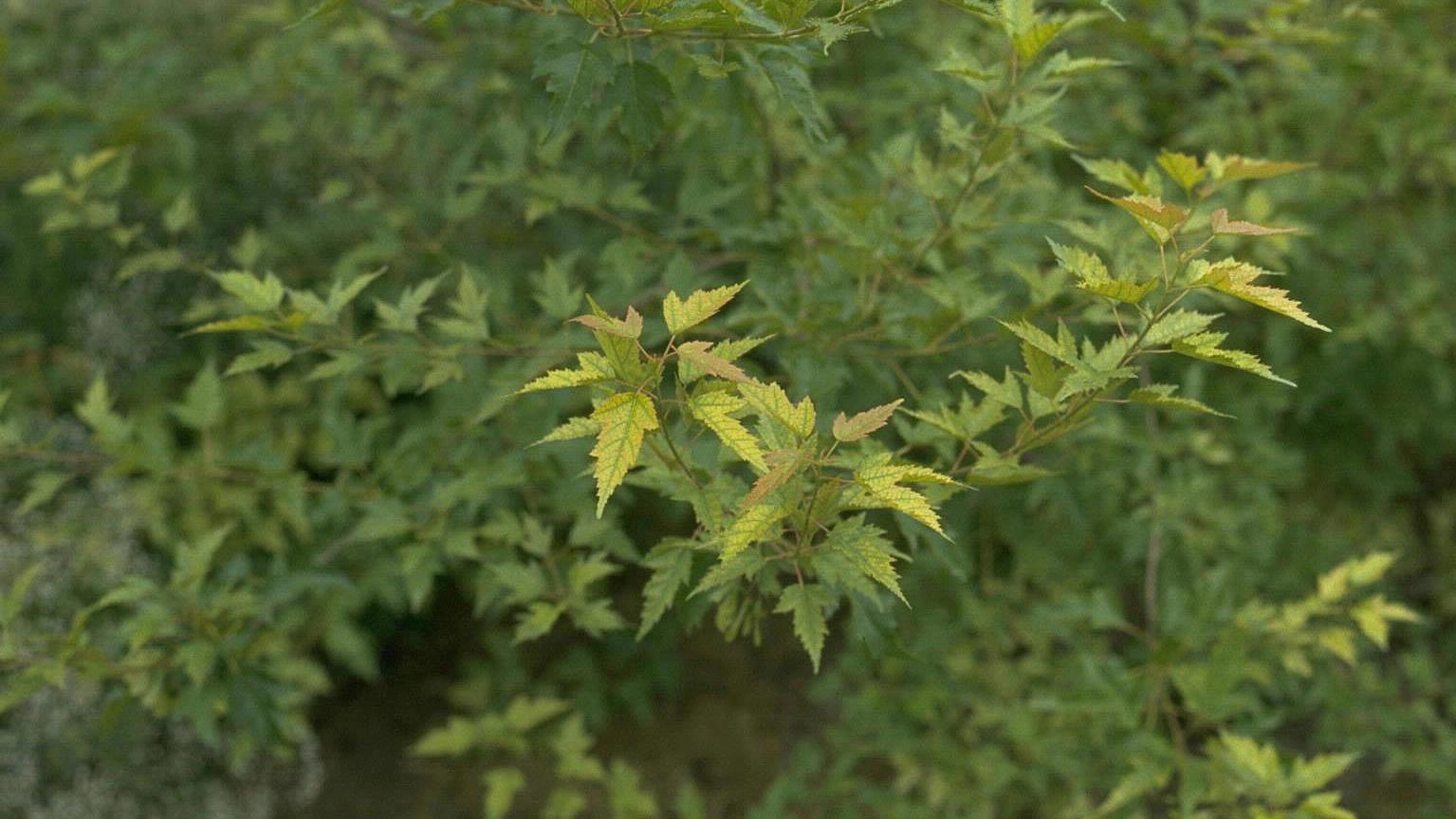Symptoms
- With few exceptions, visual symptoms of nutrient deficiencies are seldom seen in woody landscape plants.
- Except for highly alkaline soils, where iron and manganese will be unavailable, leaf color will generally look normal.
- Subnormal shoot growth and leaf size may be a more accurate indicator of low nutrient levels.
- Soil tests are also an important tool for deficiency diagnosis. In addition, nutrient symptoms are very difficult to distinguish from other symptoms associated with insects or disease, other adverse soil conditions such as compaction or discontinuous texture layers, and improper irrigation practices.
- Nutrient deficiencies are of more importance in newly planted and young plants where rapid growth is desired.
Nitrogen
Deficiency symptoms are seen first on older leaves. Deficient leaves are lighter green, smaller, may show earlier fall color or more intense fall color, and may also drop earlier. Shoots and branches will be shorter and may also be fewer in number.
Phosphorus
Deficiency symptoms are first seen on older foliage. Deficient leaves are dark green on the upper surface but may appear bronze to purple on the lower surface. Leaves will be smaller than normal and may be distorted. They will also drop early. Shoots can appear normal length but will be small in diameter.
Potassium
Deficiency symptoms are first seen on the older leaves. Deficient leaves have marginal or interveinal chlorosis followed by scorching that moves between the main veins. Leaves may also be crinkled and roll upward. Shoot tips may die back late in the season.
Calcium
Deficiency symptoms are first seen on the new leaves. Deficient leaves will be chlorotic and small with necrotic tips. Shoots are short and will show terminal dieback.
Magnesium
Deficiency symptoms are first seen on older leaves. Deficient leaves are thin and brittle, drop prematurely, and show interveinal and marginal chlorosis. Leaves eventually will develop interveinal reddening and necrosis. Shoots may appear normal unless the deficiency is severe.
Chlorosis caused by magnesium deficiency is initially the same as iron but progresses to form reddish-purple blotches and marginal leaf necrosis (browning of leaf edges). Epsom salts are a good source of supplemental magnesium.
Iron

Photo: George Hudler, Cornell University, Bugwood.org
Chlorosis symptoms, caused by a deficiency of iron, appear as yellow leaves with prominent green veins. These symptoms are usually caused by high soil pH.
A soil test can determine if the pH is too high. Iron is most readily available in acidic soils between pH 4.5-6.0. When the soil pH is above 6.5, iron may be present in adequate amounts but is in an unusable form due to an excessive amount of calcium carbonate. This can occur when plants are placed too close to cement foundations or walkways.
Soil amendments that acidify the soil, such as iron sulfate or sulfur, are the best long term solution. Some fertilizers such as ammonium sulfate will also acidify the soil. Foliar sprays of iron sulfate or chelated iron can reduce symptoms.
Other causes of chlorosis include poor root growth, root rot, root damage caused by over-fertilization or excessive deep cultivation, soil nematodes, and poor drainage.
Deficiency symptoms are first seen in the young leaves. Leaves will be light green with contrasting dark narrow green veins. Leaves may eventually show marginal scorching and bleaching. Symptoms will be more severe during cool wet spring weather. Shoot growth may be normal but small in diameter. Terminal dieback may occur under severe deficiency conditions.
Sulfur
Deficiency symptoms appear first on the older leaves. Leaves will be smaller and lighter green than normal. Shoots will be shorter than normal. Symptoms may resemble nitrogen deficiency symptoms.
Manganese
Deficiency symptoms first appear on the younger leaves. Leaves are light green with darker green bands along the veins. Leaves will eventually develop interveinal necrosis and look water-stressed. Shoot growth will be less than normal.
